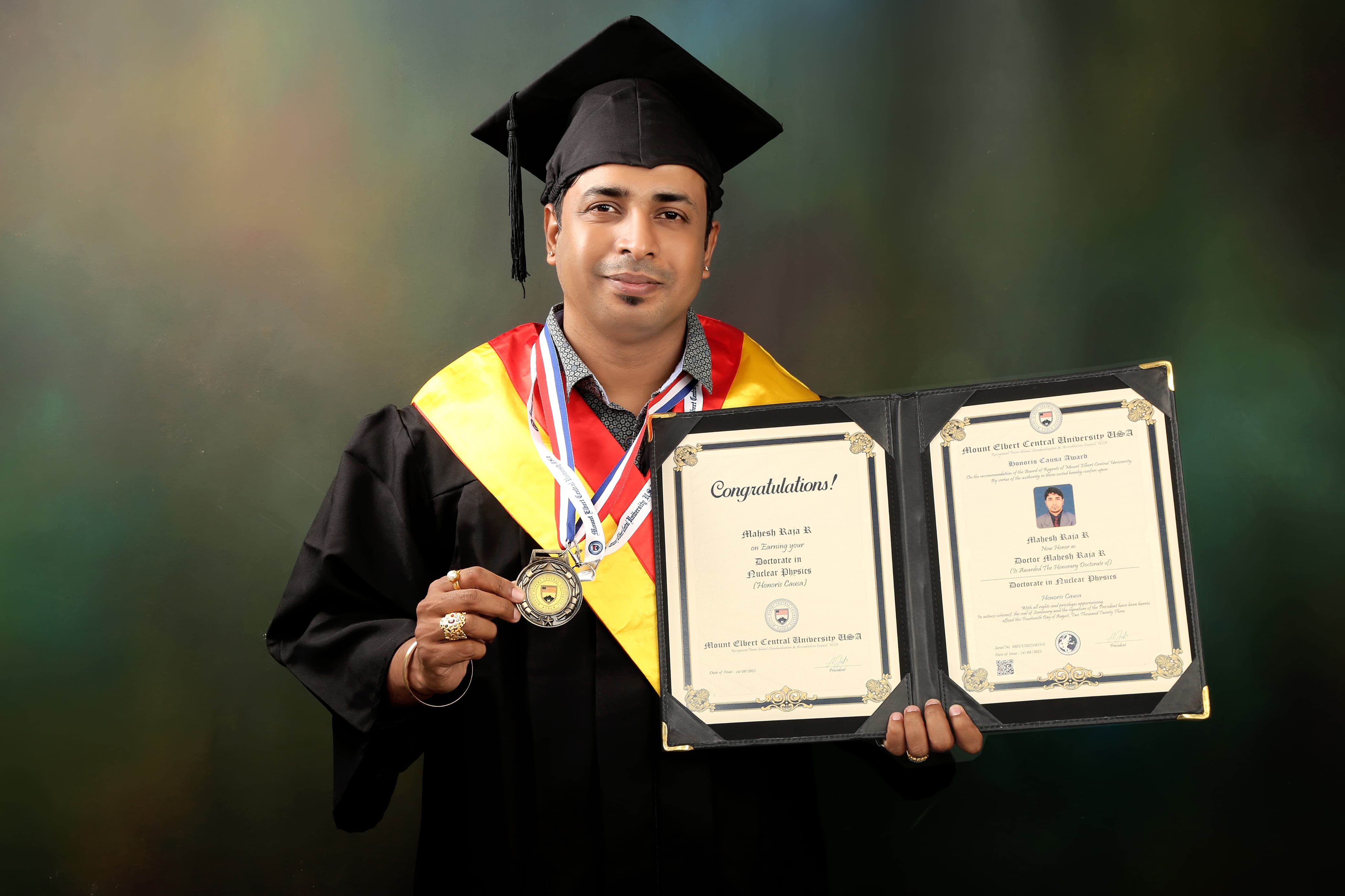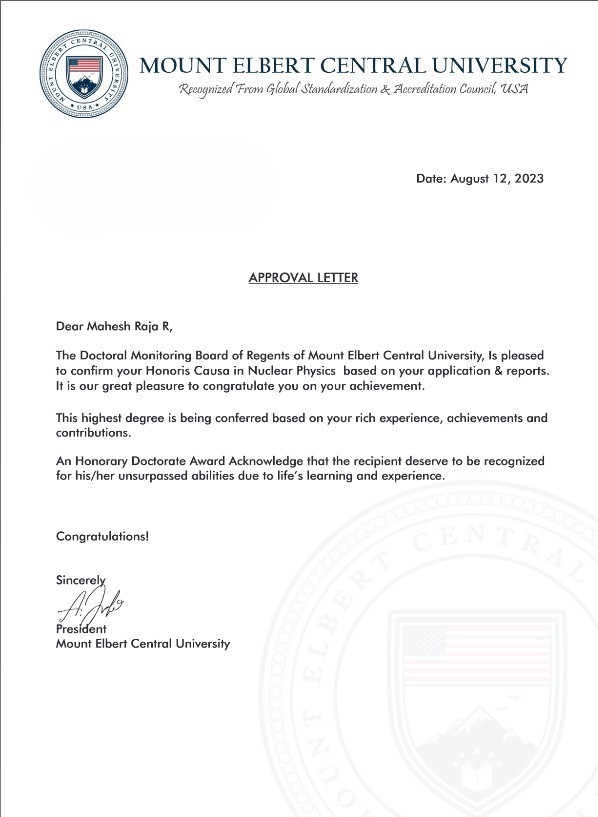Hi there! I'm
Dr. Mahesh Raja R .

I have Puruised Docterate in nuclear Physics from Mount Elbert Central University USA
10+
Years of
Experience
182+
projects completed on
15 countries
About
Hey there! I'm Dr. Mahesh Raja R, and I'm thrilled to share that I've received an honorary Doctorate in Nuclear Physics from Mount Elbert Central University 12-08-2023.
This honor recognizes my contributions to the world of science, and I'm really excited about it! Mount Elbert Central University has made this moment even more special by acknowledging my years of hard work as a researcher in various scientific fields. It feels amazing to be recognized for my dedication to nuclear physics, which is such a vital area of study.
Nuclear physics is like a fascinating puzzle that helps us explore the fundamental elements of matter and understand how everything interacts at an atomic level. From lighting up stars in the night sky to being at the center of major historical events, it’s incredible how it influences our universe.
My journey into nuclear physics sparked from sheer curiosity, and I've spent many years diving deep into topics like Polonium, a radioactive element. Collaborating with leading research organizations has allowed me to contribute to this exciting field and unravel its secrets.
Not only does nuclear physics help us understand the cosmos, but it also has real-world applications that have a direct impact on people's lives. In the medical field, for example, techniques like X-rays and PET scans rely on the principles of nuclear physics for diagnostic imaging. The use of radioactive isotopes even extends to cancer treatments and monitoring biological processes in our bodies, showcasing the importance of this discipline.
At the moment, I'm serving as the Finance Adviser for the Nuclear Cycle Management Section at Hydro & Nuclear Power Co., Ltd. (KHNP) in Asia. My professional experience in the nuclear industry has been enriching, including my previous roles as Finance Adviser for the Spent Nuclear Cycle and the Units of the Nuclear Reactor Cycle Section.
I'm not in this for the accolades; my motivation comes from the meaningful impact of my research and its potential for future generations. I truly believe in sharing knowledge and using science to improve our society. As I continue on this research journey, my aim is to raise standards and contribute to the ever-evolving scientific landscape.
Receiving this honorary Doctorate from Mount Elbert Central University validates my commitment and the influence I've had in the nuclear physics arena. I hope to inspire upcoming scientists to aim high and strive for a progressive future.
As I celebrate this significant milestone, Mount Elbert Central University has graciously congratulated me, and I can't wait to see what new ideas and innovations are on the horizon for nuclear physics and beyond!
Education & Experience
2024 - Till date
Zonal Director
National Crime Investigation Bureau
INDIA
2016 - 2023
Doctorate In Nuclear Physics
Mount Elbert Central University



